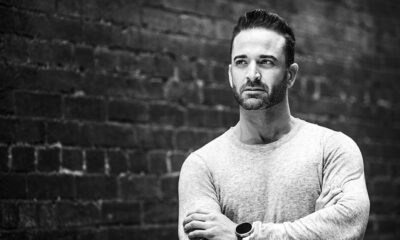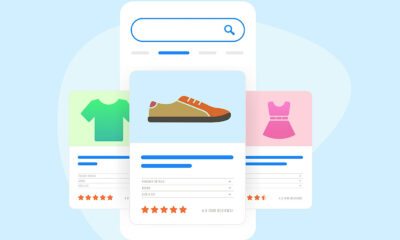MARKETING
12 Tips on How to Become an Influencer [+Data]
![12 Tips on How to Become an Influencer [+Data] 12 Tips on How to Become an Influencer [+Data]](https://articles.entireweb.com/wp-content/uploads/2023/05/12-Tips-on-How-to-Become-an-Influencer-Data.pngkeepProtocol.png)
The influencer landscape is incredibly lucrative. In 2022, the influencer market was valued at $16.4 billion and is estimated to hit $21.1 billion in 2023. If you want to step into the influencer market, you’re probably wondering how to become an influencer.
In this article, we’re going to dive into what it takes to become an influencer and the steps you need to take to find success. First, let’s define an influencer.
How to Become an Influencer for a Brand
9. Network with other influencers.
10. Create a media kit and pitch yourself to brands.
How to Become an Influencer on Social Media
1. Build an online community around your content.
2. Repurpose content as necessary.
3. Always be willing to learn and be open to new platforms.
What is an influencer?
An influencer is a person with the ability to influence consumers to purchase a service or product by promoting, recommending, or using them on social media.
For example, Jackie Aina is a beauty and makeup influencer who has collaborated with and promoted brands such as e.l.f. Cosmetics, Too Faced, Milk Makeup, and more.
How to Become an Influencer for a Brand
If you want to become an influencer who works with brands, here’s what you need to do to reach your goal.
1. Find your niche.
First, figure out what you’re passionate about. Is it fashion, tech, entertainment, health, or something else? From there, carve out a niche within your passion to set yourself apart from other influencers.
For example, if you want to be a fashion influencer, you might decide your niche is thrift store fashion, DIY fashion, or stylish outfits on a budget. If you need help finding your niche, determine who your target audience is first.
To determine your target audience, consider your ideal consumer’s wants, needs, challenges, and goals. Then use that information to create a buyer persona to find the right niche to tap into your target audience or use HubSpot’s Buyer Persona Generation Tool.
2. Choose your platform.
Once you know your target audience, you must choose a platform (or platforms) to reach them. Instagram is one of the most popular platforms for influencers and brands, and it’s easy to see why.
According to our social media trends survey, 72% of marketers listed Instagram among the social media platforms on which they work with influencers and creators.
![12 Tips on How to Become an Influencer [+Data] 72% of marketers listed Instagram among the social media platformson which they work with influencers and creators.](https://articles.entireweb.com/wp-content/uploads/2023/05/1684798662_629_12-Tips-on-How-to-Become-an-Influencer-Data.jpg) Furthermore, most marketers surveyed (30%) said Instagram is the platform they get the most significant ROI when working with influencers and creators. However, that doesn’t mean Instagram is the right choice for everyone — mainly if your ideal audience doesn’t spend much time on that platform.
Furthermore, most marketers surveyed (30%) said Instagram is the platform they get the most significant ROI when working with influencers and creators. However, that doesn’t mean Instagram is the right choice for everyone — mainly if your ideal audience doesn’t spend much time on that platform.
For example, if you’re an influencer whose niche has to do with video games, Twitch might be the better platform. Video game fans often tune into Twitch to watch content creators play their favorite games or to stream their playthroughs.
If your audience is mostly Gen Z, you’ll likely want to consider TikTok as your platform of choice.
You should also research other influencers in your niche to see what platforms they leverage the most. For example, style influencers are primarily on Instagram or Pinterest. Entertainment influencers may mostly be on TikTok or YouTube.
Once you know which platform your audience and fellow influencers frequent the most, you can select the right social media platform to post your content.
3. Create a content strategy.
The format and quality of your content will make or break your chances of successfully building yourself as an influencer. Decide on the format you’ll use when creating your content.
The format should be feasible on the platform you choose to leverage, and it should be a format that allows you to deliver valuable information while showcasing your unique personality.
An effective content strategy will give your audience a proper balance of informative content and personal content. Remember, relatability and authenticity are the reasons people trust influencers.
In fact, 72% of TikTok users find “normal creators” more interesting than celebrities, according to the platform.
To find the perfect balance of content for your strategy, use the 5-3-2 principle. With the 5-3-2 principle, five out of every ten posts would be curated content from a source relevant to your audience.
Three posts should be content you’ve created pertinent to your audience, and two posts would be personal posts about yourself to humanize your online presence.
You’re probably wondering, “How will this help me become an influencer if half of the content I publish is curated?”
For starters, influencers are known for being able to provide valuable content to their audience. That includes sharing content written by others that they believe their followers will find helpful.
Sharing content published by other influencers in your niche will help you slowly get their attention. As a result, it will be much easier to reach out to them and ask them to do the same for you later on.
When it comes to the quality of your content, you should invest in equipment such as mics, cameras, and lighting to give your audience gorgeous content that will keep them coming back for more.
Pro Tip: Smartphones have excellent cameras these days, so you can use your phone to record your content if you’re not ready to invest in an expensive camera. Just make sure to use the front-facing camera for the best image.
![12 Tips on How to Become an Influencer [+Data] 72% of TikTok users find "normal creators" more interesting than celebrities, according to the platform](https://articles.entireweb.com/wp-content/uploads/2023/05/1684798662_766_12-Tips-on-How-to-Become-an-Influencer-Data.jpg)
4. Distribute your content.
No matter how great your content is, if you’re not getting people to see it and engage with it, it’s not exactly practical.
That said, it’s essential that you carefully plan out when you’ll be publishing and distributing your content on social media.
The best time to post content on social media hugely depends on which social media channel you choose. This infographic provides a detailed breakdown of the best days and times to distribute content for each popular social media network.
It’s just as critical to know how to post your content on social media. While each social media channel has its own rules and guidelines, here are some general best practices that are applicable regardless of which social media channel you use.
![12 Tips on How to Become an Influencer [+Data] best time to post on instagram](https://articles.entireweb.com/wp-content/uploads/2023/05/1684798662_135_12-Tips-on-How-to-Become-an-Influencer-Data.png)
5. Start a website.
Whether you leverage YouTube, TikTok, Pinterest, or some other social media platform — you should always have your website as an influencer.
Websites are great for SEO because they allow you a space to create evergreen content with keywords that are optimized to get you at the top of SERPs.
You can create content around themes and keywords your audience is searching for, allowing them to flock to your website.
Furthermore, a website is an excellent avenue for consumers to engage directly with and buy products from you. It also allows brands and advertisers to learn more about you and your content and reach out to you for opportunities.
Finally, securing a long-term home base is the most important reason to have a website. Social media platforms change constantly. An app that’s popular today can lose users to tomorrow.
Even worse, a platform can completely shut down, taking all your content with it.
A website that houses your business information, content, links, and points of contact will help you stay relevant and grow as an influencer for years to come.
6. Stay updated.
As an influencer, staying tuned into the latest trends and buzzy topics is essential.
So, follow other creators in your niche on social media, keep an eye out for trending hashtags and challenges, and know what keywords your audience is searching online.
You also need to remember that social media platforms will often change their policies, algorithms, and posting terms — so stay updated to avoid your account becoming irrelevant or, worse, deleted.
Most importantly, you’ll need to familiarize yourself with Federal Trade Commission’s (FTC) guidelines and policies, especially if you’re going to be collaborating with brands to promote their products and services on your social media accounts.
7. Be yourself.
Remember, authenticity is key to being a successful influencer. Almost 70% of marketers say “authenticity and transparency” are crucial to successful influencer marketing, according to Econsultancy.
Moreover, 61% of consumers prefer influencers who create authentic, engaging content.
The best way to be authentic is to be yourself. While your content should be quality, you yourself don’t have to be flawless to be an influencer.
If your house cat walks into your shot, or you laugh as a car blasting music drives by as you’re recording — it’s okay!
Don’t be afraid to be silly on camera or show off your sense of humor — consumers love influencers because they’re more relatable and “real” than celebrities or companies.
![12 Tips on How to Become an Influencer [+Data] 61% of consumers prefer influencers who create authentic, engaging content.](https://articles.entireweb.com/wp-content/uploads/2023/05/1684798662_138_12-Tips-on-How-to-Become-an-Influencer-Data.png)
8. Engage with your audience.
When your followers leave a question or comment on your posts, take the time to acknowledge and respond to them. That can make them feel valued and that you sincerely want to help them. It will also help you develop a relationship with them.
Of course, not all of the comments and questions will be positive. As an influencer, expect that you’ll have your fair share of negative comments and criticisms. Make it a point to keep your cool and address them professionally.
9. Network with other influencers.
Collaborate with other influencers in your niche to expand your audience and grow your network. You can find potential collaborators through social media, online communities, or by attending conventions and vents.
Having business cards to pass to potential collaborators also doesn’t hurt.
10. Create a media kit and pitch yourself to brands.
A media kit is an influencer version of a resume or portfolio. An influencer media kit contains information about your work, successes, audience size, and why brands should work with you.
Every influencer should have a media kit to email to marketing professionals, brand representatives, and agencies to find work.
The kit’s design is just as important as its content because you’ll want a design showcasing your personality because personality is key.
Media kits also make you look more professional. Many people step into influencing and content creation as a hobby. Having a media kit shows companies you are not a hobbyist and are serious about your work.
Your kit should include the following:
- Your photo
- A short bio
- Your social media channels, along with your follower count on each platform
- Engagement rate
- Audience demographics
- Website link
- Information about past work and collaborations
You can design a media kit using Canva or purchase media kit templates from Etsy. You can also download media kit templates from HubSpot by clicking here.
11. Be consistent.
Your followers need to be able to consistently count on you to deliver quality content. If you don’t, they’ll eventually stop following you or at least paying attention to you.
Scheduling your posts using a social automation tool like eClincher or HubSpot’s social publishing tools can help ensure you stay consistent with your posts.
Instead of manually publishing on each of your social media profiles, these tools allow you to create, upload, and schedule posts in batches.
12. Track your progress.
This step is crucial, especially if you’re looking to collaborate with brands for their influencer marketing campaigns, since this is one of the things brands look for in an influencer to partner with.
Most social media channels give you insights and analytics to monitor your progress — things like demographics, reach, and engagement rate that will show how quickly (or slowly) you’re building your audience.
It will also shed light on which content formats get the highest engagement rates so that you can create more.
How to Become an Influencer on Social Media
The steps above are all applicable to becoming a social media influencer. Some additional tips to keep in mind are:
1. Build an online community around your content.
Building trust with your audience is critical to your success as an influencer. One way to build trust is to build a community around your content.
Create a space where your audience can ask questions, engage with your content, and find others who enjoy your work or niche.
Some influencers start communities on Discord, Reddit, or other platforms to speak candidly with their followers. You can also host live Q&As or start your own hashtag for your followers to use to connect.
2. Repurpose content as necessary.
Fresh and interesting content should always be the priority when influencing, but sometimes it helps to repurpose content.
Repurposing content is especially helpful when you’re pressed for time, lacking fresh ideas, or just need to post something to keep on schedule.
You can also repurpose content to give your posts a second life on other platforms. If you have an Instagram Reel that performed well but could use more eyes on it — repost it to TikTok or YouTube Shorts.
For more ways to repurpose content, click here.
3. Always be willing to learn and be open to new platforms.
As I mentioned earlier, social media platforms often fall in and out of favor with audiences, so always be ready to pivot when a platform is losing steam.
Keep an eye out for up-and-coming social channels, and always keep a pulse on where your audience is tuning in.
Ultimately, to be a successful influencers you need to be authentic, organized, flexible, and willing to adjust to evolving trends.
And of course, you need to create quality content that shows brands and your followers that you are serious about your work. Now that you know the steps you need to take, you’re ready to dive into the influencer market.
MARKETING
YouTube Ad Specs, Sizes, and Examples [2024 Update]
![YouTube Ad Specs, Sizes, and Examples [2024 Update] YouTube Ad Specs, Sizes, and Examples](https://articles.entireweb.com/wp-content/uploads/2024/06/YouTube-Ad-Specs-Sizes-and-Examples.jpg)
Introduction
With billions of users each month, YouTube is the world’s second largest search engine and top website for video content. This makes it a great place for advertising. To succeed, advertisers need to follow the correct YouTube ad specifications. These rules help your ad reach more viewers, increasing the chance of gaining new customers and boosting brand awareness.
Types of YouTube Ads
Video Ads
- Description: These play before, during, or after a YouTube video on computers or mobile devices.
- Types:
- In-stream ads: Can be skippable or non-skippable.
- Bumper ads: Non-skippable, short ads that play before, during, or after a video.
Display Ads
- Description: These appear in different spots on YouTube and usually use text or static images.
- Note: YouTube does not support display image ads directly on its app, but these can be targeted to YouTube.com through Google Display Network (GDN).
Companion Banners
- Description: Appears to the right of the YouTube player on desktop.
- Requirement: Must be purchased alongside In-stream ads, Bumper ads, or In-feed ads.
In-feed Ads
- Description: Resemble videos with images, headlines, and text. They link to a public or unlisted YouTube video.
Outstream Ads
- Description: Mobile-only video ads that play outside of YouTube, on websites and apps within the Google video partner network.
Masthead Ads
- Description: Premium, high-visibility banner ads displayed at the top of the YouTube homepage for both desktop and mobile users.
YouTube Ad Specs by Type
Skippable In-stream Video Ads
- Placement: Before, during, or after a YouTube video.
- Resolution:
- Horizontal: 1920 x 1080px
- Vertical: 1080 x 1920px
- Square: 1080 x 1080px
- Aspect Ratio:
- Horizontal: 16:9
- Vertical: 9:16
- Square: 1:1
- Length:
- Awareness: 15-20 seconds
- Consideration: 2-3 minutes
- Action: 15-20 seconds
Non-skippable In-stream Video Ads
- Description: Must be watched completely before the main video.
- Length: 15 seconds (or 20 seconds in certain markets).
- Resolution:
- Horizontal: 1920 x 1080px
- Vertical: 1080 x 1920px
- Square: 1080 x 1080px
- Aspect Ratio:
- Horizontal: 16:9
- Vertical: 9:16
- Square: 1:1
Bumper Ads
- Length: Maximum 6 seconds.
- File Format: MP4, Quicktime, AVI, ASF, Windows Media, or MPEG.
- Resolution:
- Horizontal: 640 x 360px
- Vertical: 480 x 360px
In-feed Ads
- Description: Show alongside YouTube content, like search results or the Home feed.
- Resolution:
- Horizontal: 1920 x 1080px
- Vertical: 1080 x 1920px
- Square: 1080 x 1080px
- Aspect Ratio:
- Horizontal: 16:9
- Square: 1:1
- Length:
- Awareness: 15-20 seconds
- Consideration: 2-3 minutes
- Headline/Description:
- Headline: Up to 2 lines, 40 characters per line
- Description: Up to 2 lines, 35 characters per line
Display Ads
- Description: Static images or animated media that appear on YouTube next to video suggestions, in search results, or on the homepage.
- Image Size: 300×60 pixels.
- File Type: GIF, JPG, PNG.
- File Size: Max 150KB.
- Max Animation Length: 30 seconds.
Outstream Ads
- Description: Mobile-only video ads that appear on websites and apps within the Google video partner network, not on YouTube itself.
- Logo Specs:
- Square: 1:1 (200 x 200px).
- File Type: JPG, GIF, PNG.
- Max Size: 200KB.
Masthead Ads
- Description: High-visibility ads at the top of the YouTube homepage.
- Resolution: 1920 x 1080 or higher.
- File Type: JPG or PNG (without transparency).
Conclusion
YouTube offers a variety of ad formats to reach audiences effectively in 2024. Whether you want to build brand awareness, drive conversions, or target specific demographics, YouTube provides a dynamic platform for your advertising needs. Always follow Google’s advertising policies and the technical ad specs to ensure your ads perform their best. Ready to start using YouTube ads? Contact us today to get started!
MARKETING
Why We Are Always ‘Clicking to Buy’, According to Psychologists

Amazon pillows.
MARKETING
A deeper dive into data, personalization and Copilots
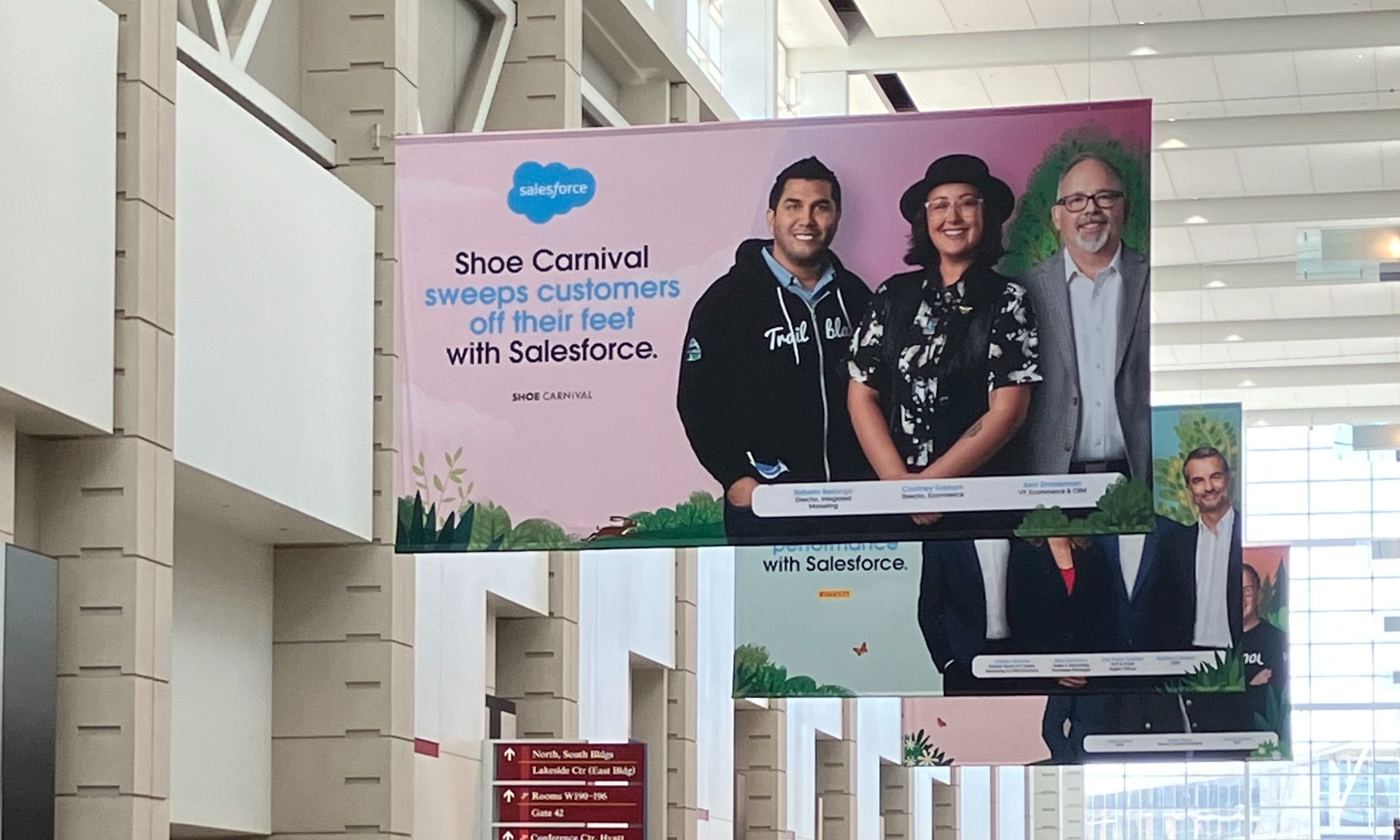
Salesforce launched a collection of new, generative AI-related products at Connections in Chicago this week. They included new Einstein Copilots for marketers and merchants and Einstein Personalization.
To better understand, not only the potential impact of the new products, but the evolving Salesforce architecture, we sat down with Bobby Jania, CMO, Marketing Cloud.
Dig deeper: Salesforce piles on the Einstein Copilots
Salesforce’s evolving architecture
It’s hard to deny that Salesforce likes coming up with new names for platforms and products (what happened to Customer 360?) and this can sometimes make the observer wonder if something is brand new, or old but with a brand new name. In particular, what exactly is Einstein 1 and how is it related to Salesforce Data Cloud?
“Data Cloud is built on the Einstein 1 platform,” Jania explained. “The Einstein 1 platform is our entire Salesforce platform and that includes products like Sales Cloud, Service Cloud — that it includes the original idea of Salesforce not just being in the cloud, but being multi-tenancy.”
Data Cloud — not an acquisition, of course — was built natively on that platform. It was the first product built on Hyperforce, Salesforce’s new cloud infrastructure architecture. “Since Data Cloud was on what we now call the Einstein 1 platform from Day One, it has always natively connected to, and been able to read anything in Sales Cloud, Service Cloud [and so on]. On top of that, we can now bring in, not only structured but unstructured data.”
That’s a significant progression from the position, several years ago, when Salesforce had stitched together a platform around various acquisitions (ExactTarget, for example) that didn’t necessarily talk to each other.
“At times, what we would do is have a kind of behind-the-scenes flow where data from one product could be moved into another product,” said Jania, “but in many of those cases the data would then be in both, whereas now the data is in Data Cloud. Tableau will run natively off Data Cloud; Commerce Cloud, Service Cloud, Marketing Cloud — they’re all going to the same operational customer profile.” They’re not copying the data from Data Cloud, Jania confirmed.
Another thing to know is tit’s possible for Salesforce customers to import their own datasets into Data Cloud. “We wanted to create a federated data model,” said Jania. “If you’re using Snowflake, for example, we more or less virtually sit on your data lake. The value we add is that we will look at all your data and help you form these operational customer profiles.”
Let’s learn more about Einstein Copilot
“Copilot means that I have an assistant with me in the tool where I need to be working that contextually knows what I am trying to do and helps me at every step of the process,” Jania said.
For marketers, this might begin with a campaign brief developed with Copilot’s assistance, the identification of an audience based on the brief, and then the development of email or other content. “What’s really cool is the idea of Einstein Studio where our customers will create actions [for Copilot] that we hadn’t even thought about.”
Here’s a key insight (back to nomenclature). We reported on Copilot for markets, Copilot for merchants, Copilot for shoppers. It turns out, however, that there is just one Copilot, Einstein Copilot, and these are use cases. “There’s just one Copilot, we just add these for a little clarity; we’re going to talk about marketing use cases, about shoppers’ use cases. These are actions for the marketing use cases we built out of the box; you can build your own.”
It’s surely going to take a little time for marketers to learn to work easily with Copilot. “There’s always time for adoption,” Jania agreed. “What is directly connected with this is, this is my ninth Connections and this one has the most hands-on training that I’ve seen since 2014 — and a lot of that is getting people using Data Cloud, using these tools rather than just being given a demo.”
What’s new about Einstein Personalization
Salesforce Einstein has been around since 2016 and many of the use cases seem to have involved personalization in various forms. What’s new?
“Einstein Personalization is a real-time decision engine and it’s going to choose next-best-action, next-best-offer. What is new is that it’s a service now that runs natively on top of Data Cloud.” A lot of real-time decision engines need their own set of data that might actually be a subset of data. “Einstein Personalization is going to look holistically at a customer and recommend a next-best-action that could be natively surfaced in Service Cloud, Sales Cloud or Marketing Cloud.”
Finally, trust
One feature of the presentations at Connections was the reassurance that, although public LLMs like ChatGPT could be selected for application to customer data, none of that data would be retained by the LLMs. Is this just a matter of written agreements? No, not just that, said Jania.
“In the Einstein Trust Layer, all of the data, when it connects to an LLM, runs through our gateway. If there was a prompt that had personally identifiable information — a credit card number, an email address — at a mimum, all that is stripped out. The LLMs do not store the output; we store the output for auditing back in Salesforce. Any output that comes back through our gateway is logged in our system; it runs through a toxicity model; and only at the end do we put PII data back into the answer. There are real pieces beyond a handshake that this data is safe.”
-

 SEARCHENGINES5 days ago
SEARCHENGINES5 days agoBillions Of Google goo.gl URLs To 404 In The Future
-
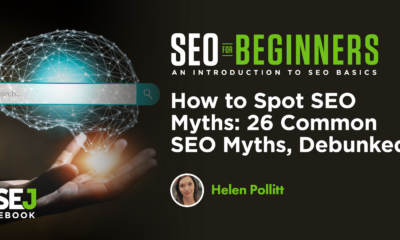
 SEO7 days ago
SEO7 days ago26 Common SEO Myths, Debunked
-
SEARCHENGINES4 days ago
Daily Search Forum Recap: July 22, 2024
-

 SEO5 days ago
SEO5 days ago11 Copyscape Alternatives To Check Plagiarism
-

 SEARCHENGINES6 days ago
SEARCHENGINES6 days agoGoogle Core Update Coming, Ranking Volatility, Bye Search Notes, AI Overviews, Ads & More
-

 SEO6 days ago
SEO6 days agoGoogle Warns Of Last Chance To Export Notes Search Data
-
SEARCHENGINES3 days ago
Daily Search Forum Recap: July 23, 2024
-
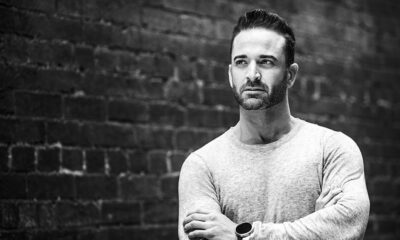
 AFFILIATE MARKETING6 days ago
AFFILIATE MARKETING6 days agoThe Top 5 AI Tools That Can Revolutionize Your Workflow and Boost Productivity


![12 Tips on How to Become an Influencer [+Data] Download Our Guide to Influencer Marketing Essentials](https://articles.entireweb.com/wp-content/uploads/2023/05/1684798662_783_12-Tips-on-How-to-Become-an-Influencer-Data.png)
![12 Tips on How to Become an Influencer [+Data] IMG_0601](https://articles.entireweb.com/wp-content/uploads/2023/05/12-Tips-on-How-to-Become-an-Influencer-Data.jpg)
![12 Tips on How to Become an Influencer [+Data] Improve your website with effective technical SEO. Start by conducting this audit.](https://articles.entireweb.com/wp-content/uploads/2023/05/1684798662_903_12-Tips-on-How-to-Become-an-Influencer-Data.png)
